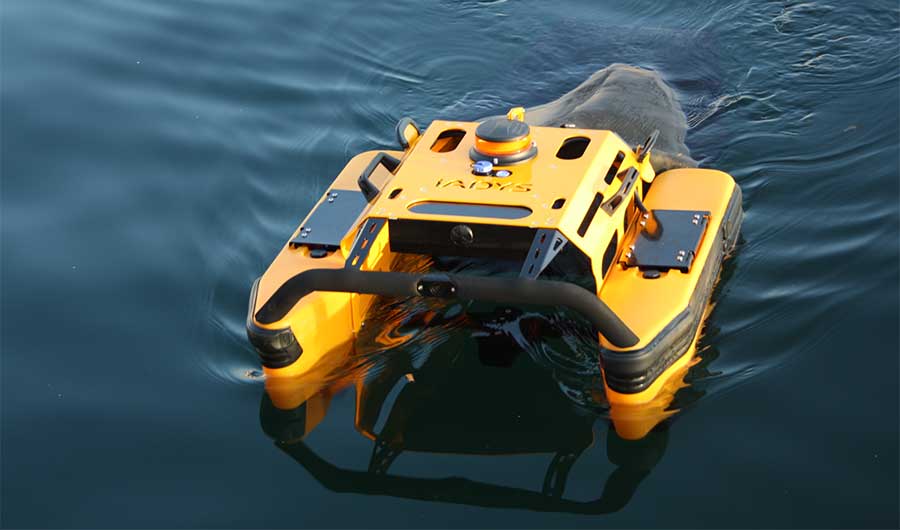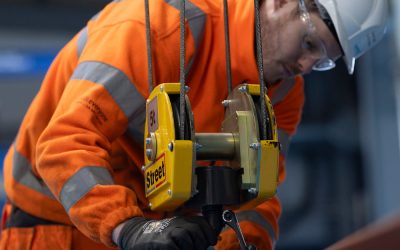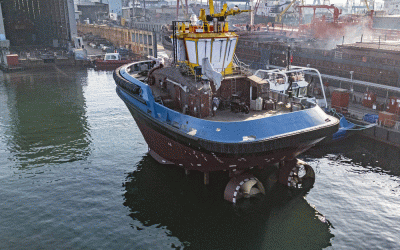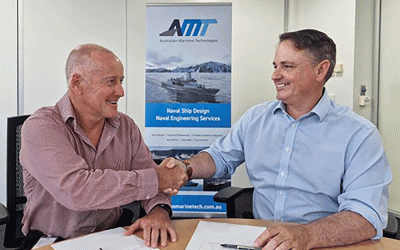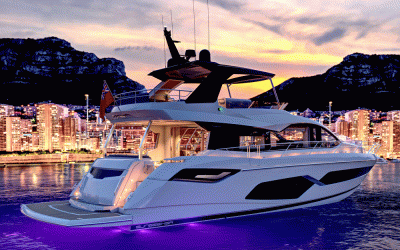D-Marin’s autonomous litter bot promises good riddance to bad rubbish
Marina operator D-Marin has recruited an autonomous bot to assist with the removal of floating litter and spilt oil from its marinas in Greece. The Jellyfishbot, developed by French AI and robotics specialist IADYS, comprises a 20kg unit fashioned from polyethylene and aluminium alloy. The bot is currently stationed at the Zea megayacht marina near Piraeus, and will also be used for clean-up missions at D-Marin’s Lefkas and Gouvia marinas.
The bright-yellow bot should help to boost these marinas’ aesthetic appeal by removing garbage, including plastic bags and cigarette butts, from their surrounding waters. By capturing the rubbish early on, the bot can also prevent it from flowing from the marina to the deep sea, where efficient waste and oil recovery becomes far more complex.
D-Marin’s Jellyfishbot investment is also a welcome development for IADYS, which is keen to push the product as a solution for ports, marinas, lakes and canals, as well as a clean-up tool for leisure centres, hotel residences and industrial facilities. In 2022, for example, IADYS supplied a Jellyfishbot to the Sea Paradise aquarium in Tokyo, where it has been used to keep the facility’s water clean and to educate schoolkid visitors about the long-term importance of coastal and environmental protection.
Developed as a mini-catamaran, the Jellyfishbot measures 700mm (l) x 700mm (w) x 480mm (h) and draws 230mm. Its proportions make it easy to transport the bot between locations in a standard suitcase, and enable it to access tight corners and narrow spaces that may prove inaccessible to larger clean-up boats (or shoreside personnel with nets). The robot runs on two batteries, granting it an operational autonomy of six to eight hours, with two hours required for a complete recharge. Topped up, the unit can cover 1,000m2 in an hour at a speed of 1knot.
The bot also uses GPS points to autonomously clean a pre-defined area, though the operator can seize remote control of the unit at any time via a handheld controller. Three electric thrusters, each rated 250W, enable the bot to manoeuvre forward, backwards and sideways. Intended for localised operations rather than far-flung, offshore missions, the system offers 1km of range control. Additionally, two Jellyfishbot units can be deployed simultaneously and positioned with a boom held between them, to capture any spilt oil. The company offers 3m or 6m adsorbent booms, or a 15m ultra-rapid boom. Various nets, underwater probes and other tools can be added to the Jellyfishbot, and it carries a 1920x1080px camera with 120° horizontal angle as standard.
For the Zea marina Jellyfishbot order, D-Marin opted for a trash collection net with a capacity of 80litres: however, the size of net can vary depending on the size, type and weight of the waterborne rubbish to be collected. The robot’s nets come in different mesh sizes, ranging from 150μm to 10mm, to capture macro- and micro-waste including floating plastics, cigarette butts, golf balls, duckweed and even certain paint dusts. Some of these rubbish collection nets are recycled from kitesurf wings and old fishing net, further reducing the bot’s impact on the environment. Once a net is full, it can be removed from the bot by hand, or by grab pole from a marina jetty.
The Jellyfishbot can store 30litres of recovered hydrocarbons when fitted with a suitable receptacle. It’s not all about waste and oil recovery, though: users can also fit the bot with a 3m trawl to collect larger objects from the water, such as tree branches.
